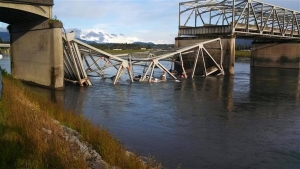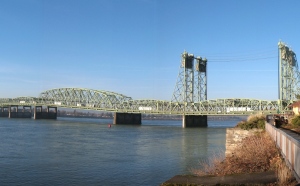By Wiha Powell
Innovative Infrastructure Investment
“We invest less in our infrastructure than we did two decades ago. That’s inefficient at a time when it’s as cheap as it’s been since the 1950s to build things… The longer we put this off, the more expensive it will be, and the less competitive we will be…The businesses of tomorrow won’t locate near old roads and outdated ports; they’ll relocate to places with high-speed internet; high-tech schools; systems that move air and auto traffic faster”–President Obama

Infrastructures can be defined as “the underlying foundation or basic framework of a system or organization.” In the United States these systems are our highways, bridges, levees, power grids and pipeline. For years, we have witnessed the crumbling of our infrastructures, endangering the physical and economic well-being of the nation. Before our eyes, the nation witnessed the May 2013 collapse of Washington State’s I-5 bridge over the Skagit River; in 2010 the San Bruno, California gas transmission line exploded; in 2007 Minneapolis I-35W bridge collapsed; and in 2005 the New Orleans levees failed to hold back flood water from Hurricane Katrina. In spite of these catastrophic failures, infrastructure investments have been sluggish due to the nation’s economical downturn.
According to Transportation for America, there are 66,405 structurally deficient bridges in the country. This basically amounts to 1 in 9 bridges. The American Society of Civil Engineers gave the nation’s infrastructure a “D+” grade. According to the White House “it is the best grade the nation infrastructure has received in 15 years.”
Even though a “D+” is the best grade the nation has seen in 15 years, it is simply unacceptable. The nation needs to do more to prevent more catastrophic failures like we have seen in the past. Trillions of dollars of investment are needed to maintain and rebuild the nation’s critical public infrastructure.
In an age of austerity, after receiving such an investment how do we allocate the monies to improve our infrastructure?
First, the nation’s transportation system needs to work on its backlog of maintaining and improving our streets and highways.  Secondly, novel materials should be use to maintain and renew our infrastructure. Not cheap materials, similar to what was used to repair the steel crossbeam and steel tie rods of the Oakland Bay Bridge in San Francisco. Repaired during the 2009 Labor Day weekend, the bridge collapsed just a few months later.
Secondly, novel materials should be use to maintain and renew our infrastructure. Not cheap materials, similar to what was used to repair the steel crossbeam and steel tie rods of the Oakland Bay Bridge in San Francisco. Repaired during the 2009 Labor Day weekend, the bridge collapsed just a few months later.
Thirdly, infrastructure investments need to accelerate to help spur the economy; these investments and spending pumps money into the economy and create jobs. Finally, the development of innovative and advanced construction methods by making advances in computer science and robotics, which could speed up construction time while lowering cost.
A D+ grade signifies that there is room for major improvements and the nation’s infrastructure is in need of major improvements. Rebuilding may seem frightening or unnerving, but it is an achievable goal for the nation. It is time for our leaders to use new and creative methods to raise money while spending more on our infrastructures and its backlog. Luckily, interest rates are historically low so this is the best time to invest in our nation’s infrastructures and lock in a low rate for years to come.